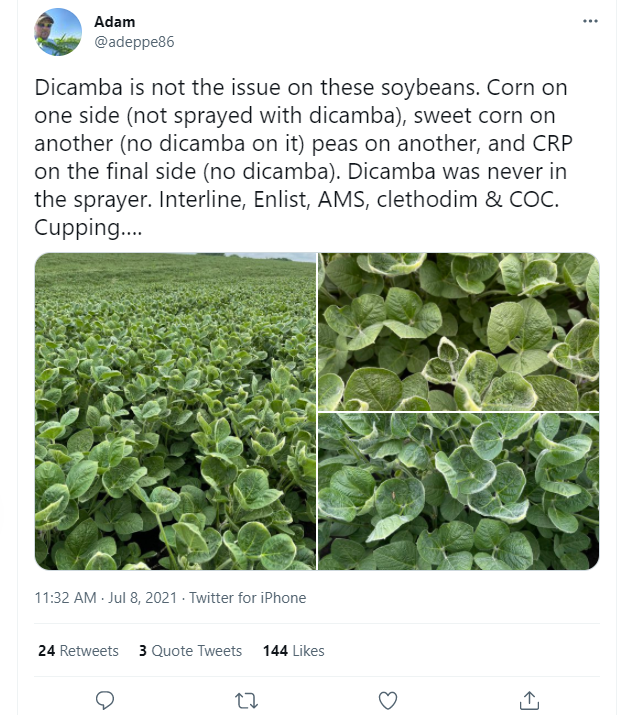CAB Insider: Marbling Bred in More Than Fed In
A year ago in the Insider, we checked in on higher quality grade trends in the midst of a 4th quarter year-on- year decline in carcass weights. Marbling levels and the resulting USDA quality grades were outperforming 4th quarter 2015, a period that posted the all-time heaviest average carcass weights for fed cattle. This fueled rationalization that increased carcass quality is not merely a function of heavier carcasses. In full disclosure, a 2015 study by our company of several hundred-thousand CAB-eligible carcasses showed a slightly positive correlation between marbling score and carcass weight when fit onto a graph—but the data looked more like a shotgun pattern than a trend line.
Understandably, heavier individual carcasses get the nod, but the emerging population data shows that marbling is “bred in” much more than “fed in,” and that the industry has changed cattle genetics in a positive direction. To drive this home in real time, the quality grade graph included here shows a trend, diverging in the period since late August to maintain higher grades. The national average Choice percentage of 73% and Prime at 6.6% show increases of 3 percentage points and 1 point, respectively, above a year ago. This, at the same time fed cattle carcass weights averaged 10 lb. lighter than a year ago in that period, and 20 lb. lighter than that period in 2015. We’ve had a record high average of 31.5% of eligible carcasses qualified as CAB while those CAB carcasses are also 13 lb. lighter for the past 8 weeks, compared to a year ago when acceptance averaged a point lower.
Market Update
Cattle feeders last week were able to push the market higher once again, with a market average of $111/cwt. and an increase of $1/cwt. on the week. Packer margins are getting a bit narrower but certainly large enough to encourage the kind of weekly production we’ve seen. The big picture for not only beef, but pork and poultry as well, is that demand is impressive here in the 4th quarter even as production of each of those proteins is large. Carcass weights took a step back in the latest report, dropping 3 lb. from 897 to 894 on the steers. That compares to 909 lb. a year ago and this year’s lower numbers tell us active cattle movement to packing plants is tempering the normal carcass weight increase run into November.
Cow-calf producers beginning to merchandise their spring-born calves at this time are being rewarded with a strong October market, unlike the same month a year ago: 600-lb. steer calves are bringing from $170 to $180/cwt. (about $1,050 per head) in some cases, while 500-lb. calves are priced closer to $180/cwt. and a bit higher ($900 per head). This should represent a very decent profit for the average producer, with annual production costs per cow-calf pair estimated in the range of $600 to $750.
Last week’s choppy up and down movement in boxed beef prices ended with the overall beef complex essentially unchanged from the week prior. Predictably, the Certified Angus Beef (CAB) brand rib was the major mover among the primals with a lip-on ribeye roll priced at $8.02/lb. in the spot market. Two weeks ago we saw the price for that item well below each of the three prior years for the same week, but the quick, two-week spike now has the ribeye priced higher than any of the 5 previous years for the moment, while much upward trajectory remains likely through early December.
The only other measurable price movement across the CAB carcass last week is the tenderloin, which moved higher by 20¢/lb. to average $10.35/lb. on the defatted, lighter boxes or “down” product. Still, that’s at the low end of the price potential for that item moving toward the holidays. Briskets saw a little unseasonal price increase in the past couple of weeks as well, bumping up to $2.44/lb. The chuck and round primals were a few cents cheaper on the week in limited price movement for any particular item, with ground beef items priced a bit weaker as well.
Rib demand anticipates the advent of Advent
Like clockwork, holiday rib demand has kicked into gear beginning in early October. Regular readers are aware that the quantity of Choice, CAB and Prime ribeyes will be ahead of last year by a fair margin. An average of the past four weeks shows the fed cattle harvest has run 27,600 head larger than a year ago, coupled with a 4 percentage-point increase in Choice and Prime grading percentages as of late, and we have a lot of high quality ribeyes for sale. The accompanying chart for the comprehensive Choice boxed beef cutout shows that 4th quarter beef prices tend to soften as prices for ground beef, end meats and loins (with the exception of peeled tenderloins) all tend to devalue. This is not the case with the rib, which meets it’s day in the sun with the advent of December holidays. Note the second chart indicating the portion of the Choice cutout value that the Choice rib represents throughout the year. The 2017 4th quarter rally is just emerging but it is out of the gate early compared to a year ago. It remains to be seen if ribeyes can pull prices higher than the wild spike seen in May and July of this year. Without the rib, large 4th quarter supplies would weigh heavily on cutout prices. Meanwhile, savvy buyers should take advantage of attractive pricing on strip loins and CAB grinds at this time.











